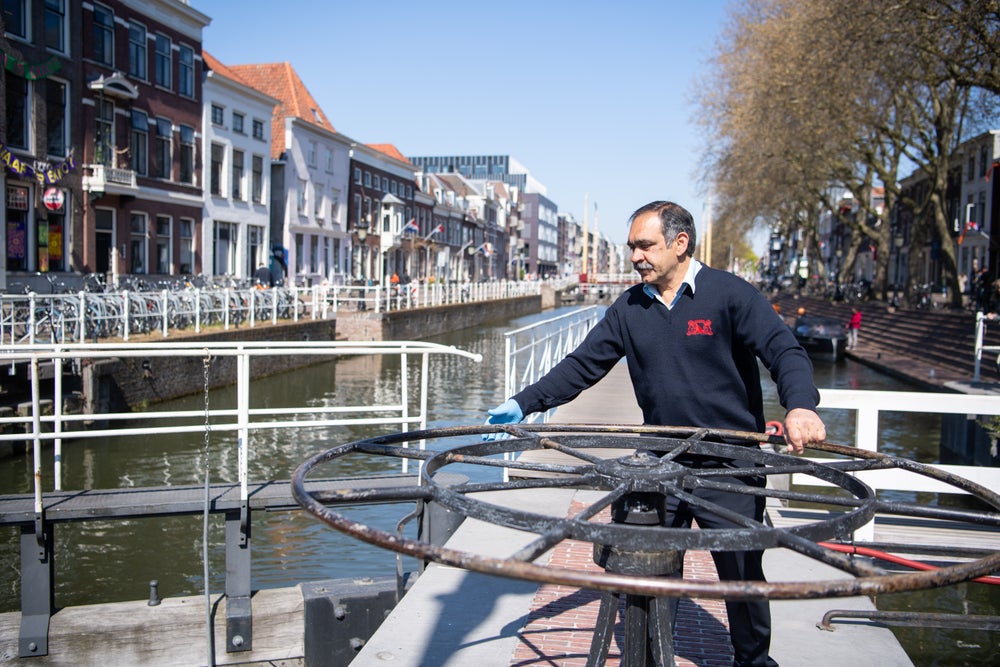To Help Fish Migrate through a Dutch Canal, Ring the Dam Doorbell!
An online underwater livestream lets worldwide volunteers ring a “fish doorbell” to help fish fulfill their reproductive missions
Canals flow freely through the Dutch city of Utrecht all summer, allowing passage for boats—and animal species that live beneath the surface. But in the spring, when the weather is chillier and far fewer vessels ply the canals, a dam on the west side of the inner city is often closed. This lock gate blocks migrating aquatic creatures, many of them on a once-in-a-lifetime journey that time of year to reproduce.
“Spring is a really special time period for fish because it’s when they get the chance to spawn and make babies,” says Anne Nijs, an ecologist for Utrecht. “But sometimes [the gate is closed for weeks and weeks, and the fish just have to wait there, getting preyed on by birds.”
On supporting science journalism
If you’re enjoying this article, consider supporting our award-winning journalism by subscribing. By purchasing a subscription you are helping to ensure the future of impactful stories about the discoveries and ideas shaping our world today.
To help the fish complete their biological mission, Nijs and ecologist Mark van Heukelum created the Fish Doorbell (“de Visdeurbel” in Dutch). This online underwater camera system lets a viewer anywhere in the world visually check for fish that are waiting at the lock’s closed gate—and push a virtual button that notifies an operator to open the barrier. The dam, called the Weerdsluis, is more than 200 years old and takes 30 minutes to open manually with a large wheel, so the operator complies only when several fish cluster near the camera.

A duck dives its head in looking for fish and a carp passes in front of the camera for the “fish doorbell.”
First launched in spring 2021, the project has gained momentum each year and garners viewers and doorbell ringers around the world. Since its reactivation on March 1, 2024, more than one million people have visited the website to try and spot waiting schools of fish. The livestream and its digital button can accommodate approximately 1,000 users at a time—a capacity that is met more often than not. Additional fish fanatics can still watch the video but without the ability to ring the doorbell.
When the ecologists first installed the camera and advertised it around the canal, passersby laughed, Nijs says. The announcement came suspiciously close to April Fools’ Day, and few people took it seriously. But now Nijs and van Heukelum receive mail from fans expressing their newfound fascination for wildlife and gratitude for the project. “Somebody who had been very depressed and anxious reached out to me and said that the Fish Doorbell was the only thing that … could make her feel calm and distract her from difficult thoughts,” Nijs says. “It really is so special for people to knowingly watch something with 900 other people around the world at the same time.”

Lock operator Rashied Saeedi opens the lock by hand.
Online wildlife livestreams are fairly common and usually aim to excite people about conservation efforts, says Steven Mattocks, an aquatic connectivity and fisheries outreach biologist at the Massachusetts Division of Fisheries and Wildlife. But an interactive video system that actually lets the public lend a direct hand in migration seems novel and could potentially be used to support animals elsewhere, he adds. “Something like this could be used to help endangered species such as the Atlantic sturgeon, which we have here in [Massachusetts],” Mattocks says. “There are so few of them, and we don’t always know when they show up near a dam…. But if we could, using something like this, it would be hugely helpful.” He also speculates that a similar doorbell could be used to track the timing and patterns of animal migrations, which are shifting as water temperatures rise from climate change.
Meanwhile Utrecht’s Fish Doorbell is helping locals learn to care about the health of their canal ecosystem—which fish and other species help maintain when they consume algae and deposit nutrients as they swim through. “People didn’t necessarily know that there was life in the water,” Nijs says. “They just thought it was mostly old bikes that get dumped…. But now they know, and now they care.”

